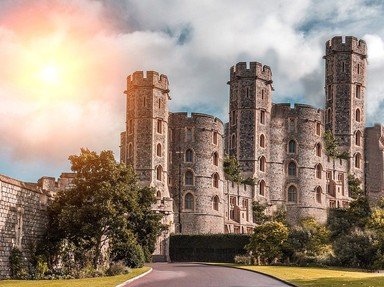Quiz Answer Key and Fun Facts
1. The buildings of the Tower of London, as we see them today, are the result of almost 1000 years of evolution. Initial works began in around 1078, just a decade or so after the English defeat at the Battle of Hastings. Which Norman king of England was responsible for its construction?
2. Many people consider the prominent, four-turret stronghold at the centre of the site today to be 'the' Tower of London. But what is the correct name for this building?
3. Discreetly tucked away in a corner of the grounds, situated to the left of the barrack building and immediately to the rear of the small memorial green, is the 'Chapel Royal of St Peter ad Vincula'. What does the latin term 'ad Vincula' actually mean?
4. The world famous 'Traitor's Gate' is the only remaining entrance to the fortress that is still accessible directly from the River Thames. True or false?
5. The Tower of London is renowned for the tales and legends that surround it. With this in mind, seven individual members of 'Corvus corax' can be seen here. Each individual also possesses a 'pet name' that may give visitors to the Tower a clue as to their origin. What are 'Corvus corax'?
6. The Tower of London is also home to the headquarters and museum of the regiment that, at one time, recruited predominantly from the city of London. Readily identifiable today by the wearing of a red and white feather hackle on their headdress, what regiment has their headquarters here?
7. Many of you that may have visited the Tower of London may have attempted to distract the sentries whilst at their posts, especially the sentry immediately outside the barrack building at Number One Post. You might also have noticed that this soldier's foot drill whilst 'on patrol' is markedly different from the other sentries on duty around the Tower. But in what manner?
8. Known the world over for their decorative red and gold Tudor ceremonial uniforms, the Yeoman Warders of the Guard provide the personal escort for HM the Queen on state ceremonial occasions. Are the Yeoman Warders of the Tower one and the same thing?
9. Situated on Tower Green and positioned between Bell Tower and the Bloody Tower is a building known as 'The Queens House'. Who resides within this building?
10. Imagine the scene; a quiet, balmy summer evening and the only sound is the distant hum of London's evening traffic. You are one amongst a small group of selected guests and paying visitors, standing in Water Lane between Traitors Gate and Wakefield Tower in silent anticipation. Minutes later a heavy wooden gate slams shut, and in the semi-darkness you are alerted to the sound of hobnails hammering on cobblestones and the soft glow of a lantern approaching you. What is it that you are just about to witness?
Source: Author
SisterSeagull
This quiz was reviewed by FunTrivia editor
stedman before going online.
Any errors found in FunTrivia content are routinely corrected through our feedback system.

